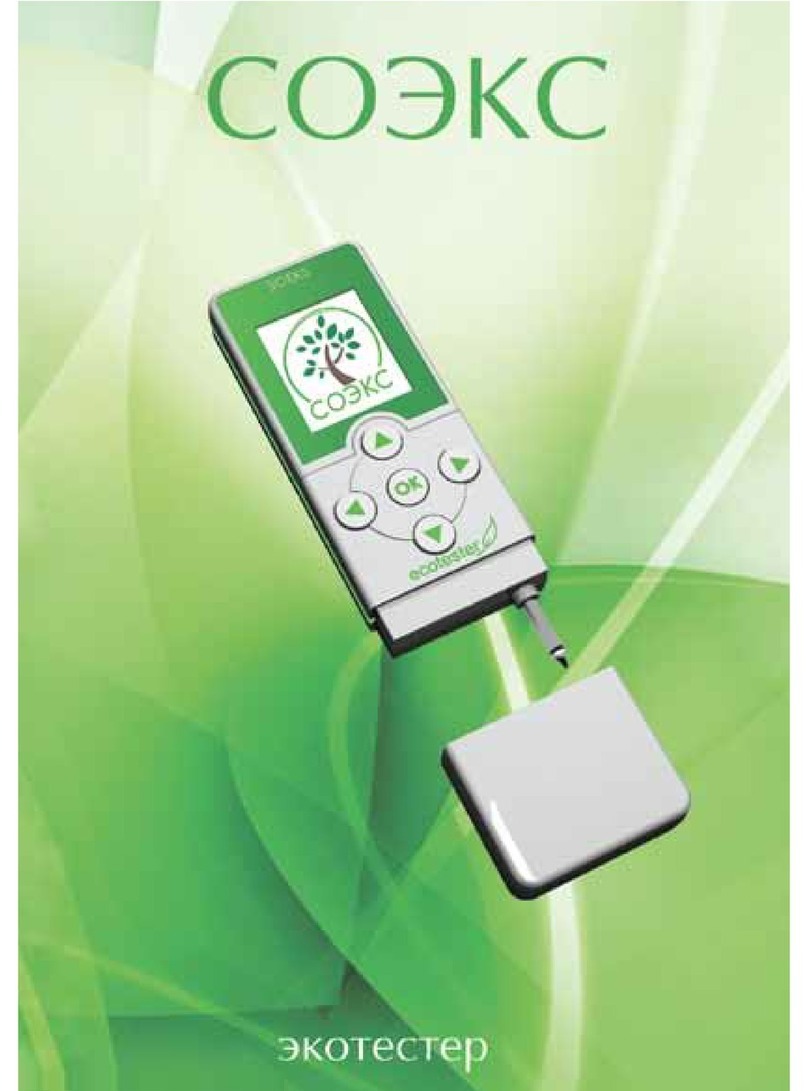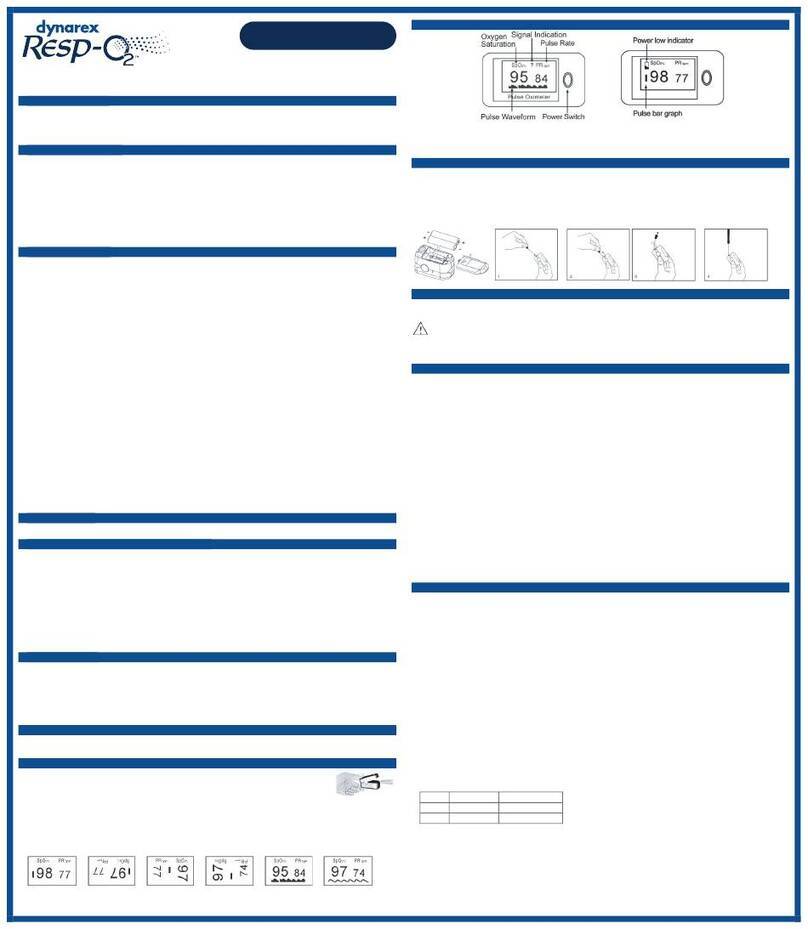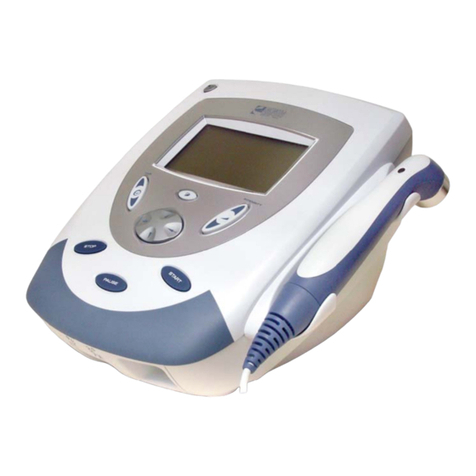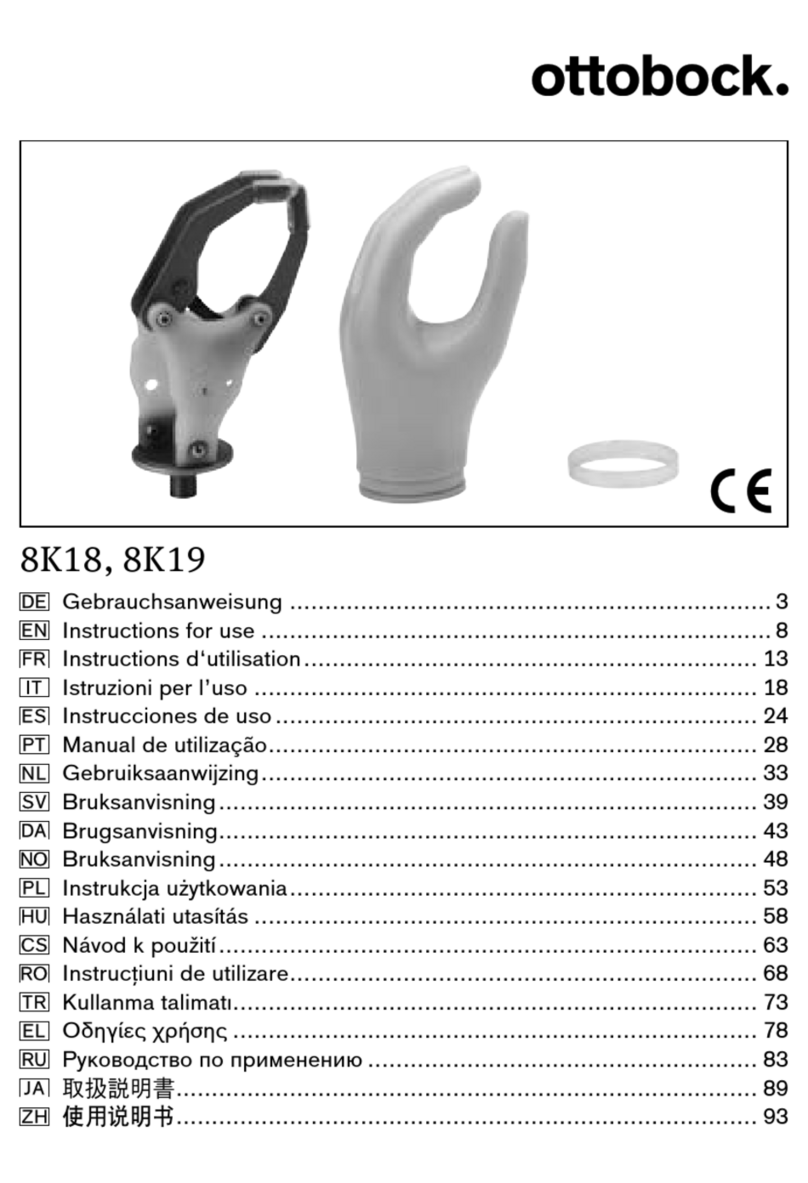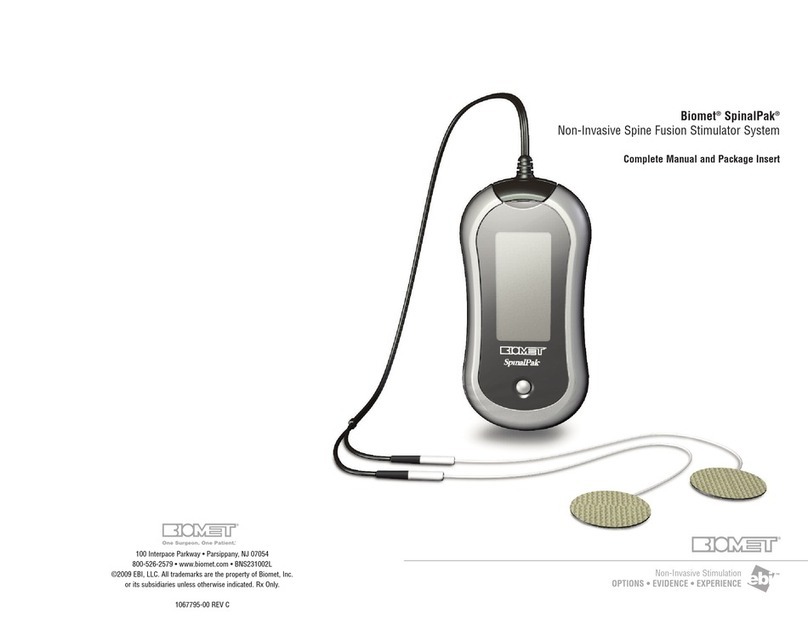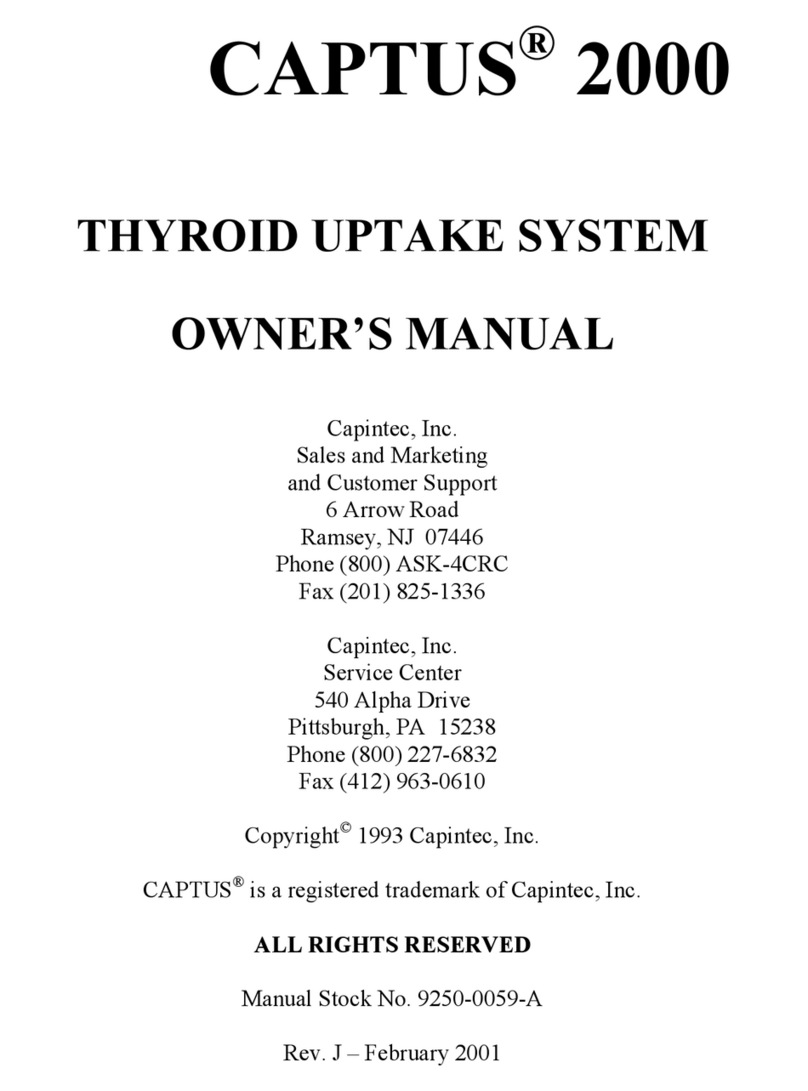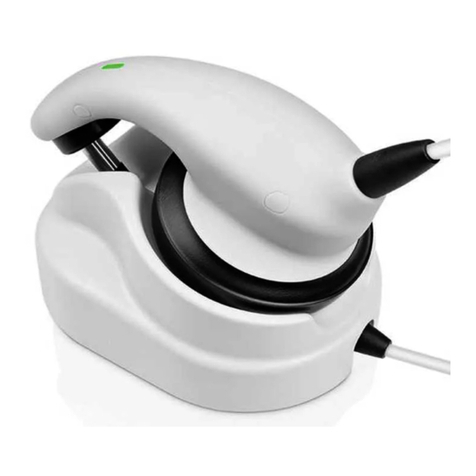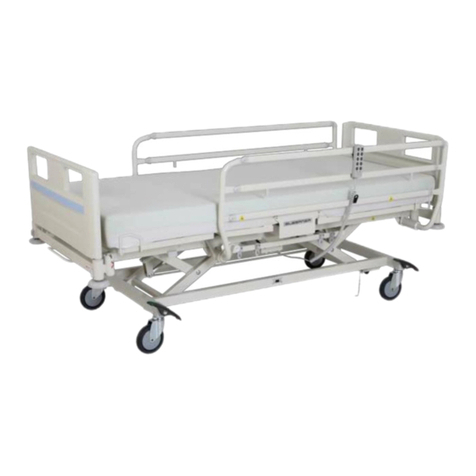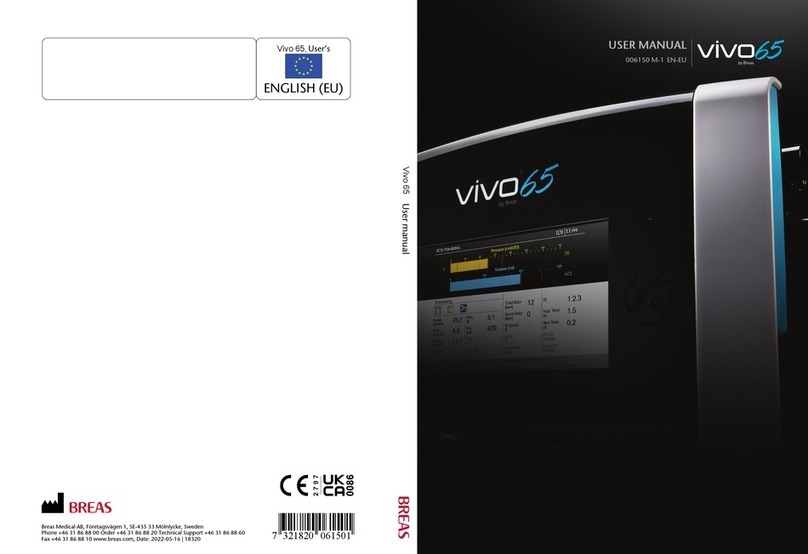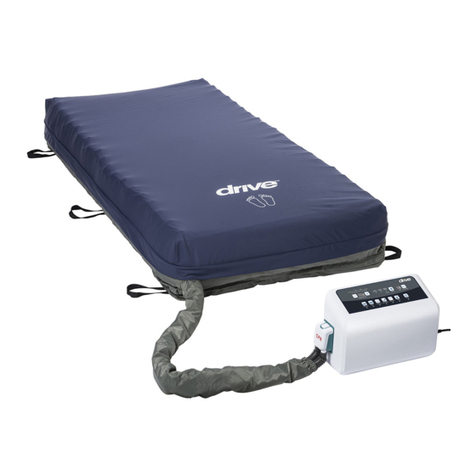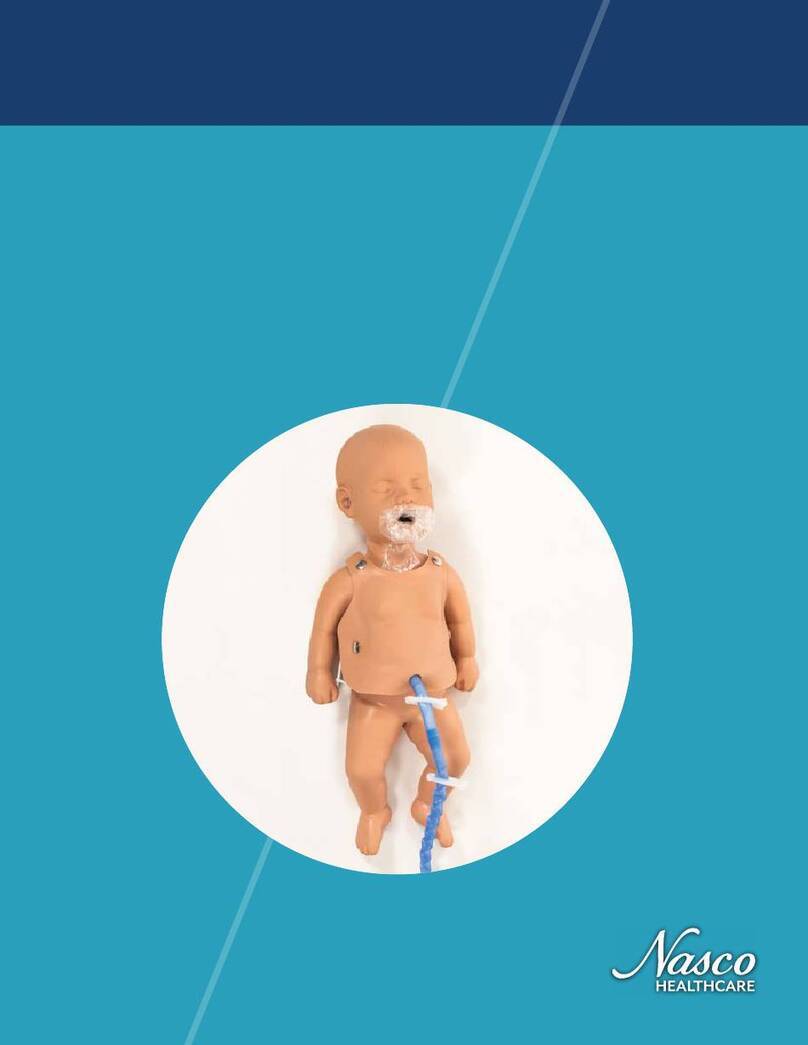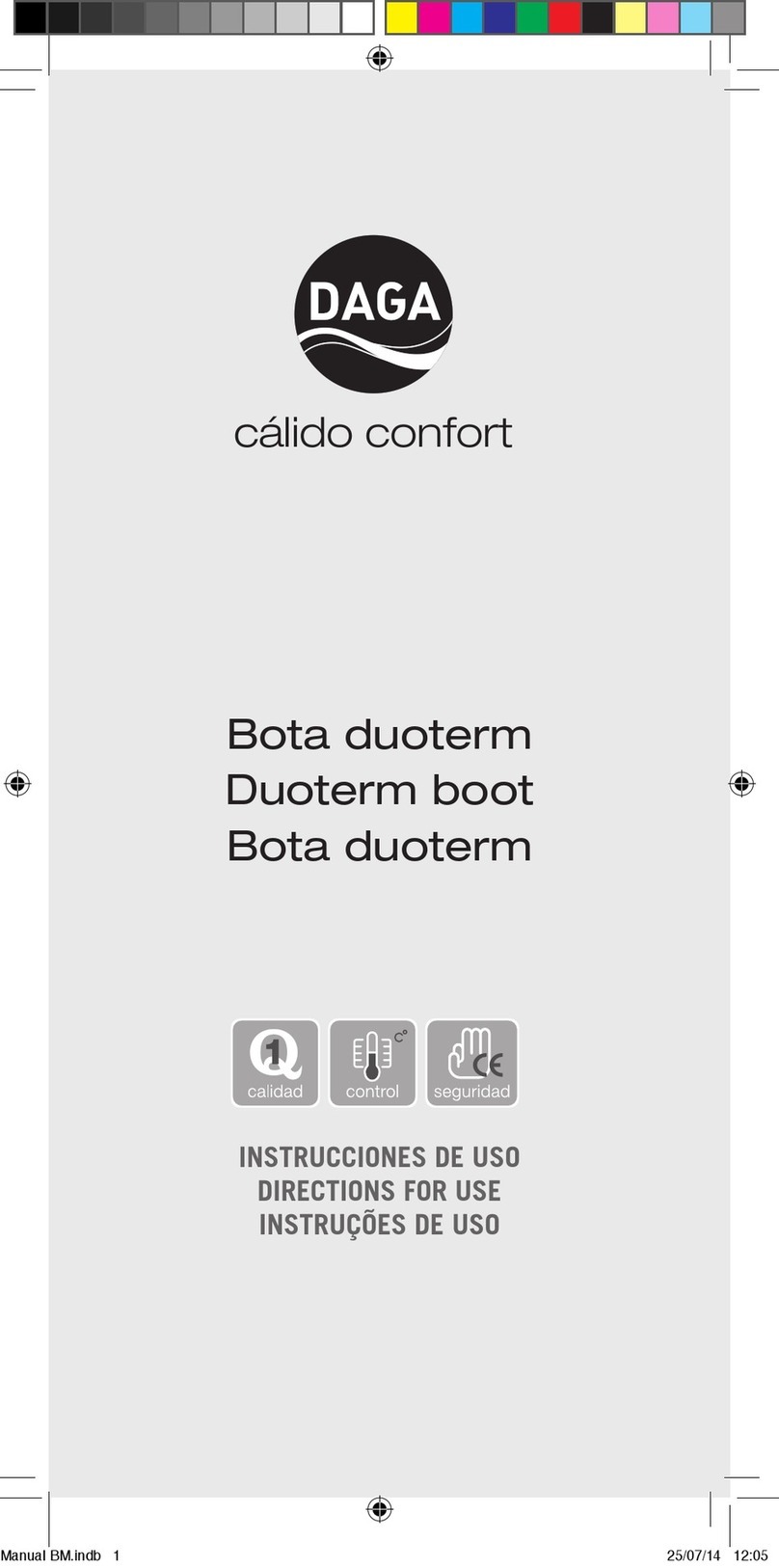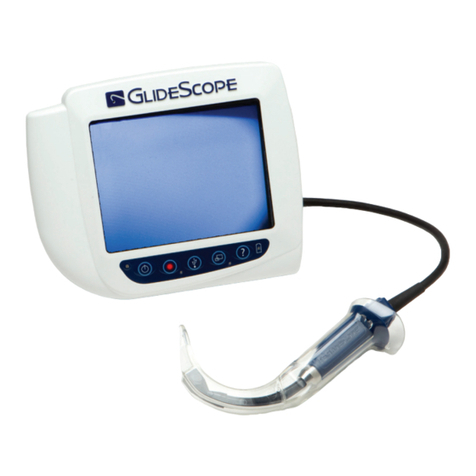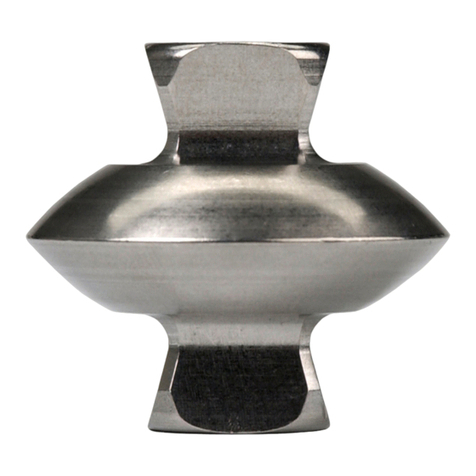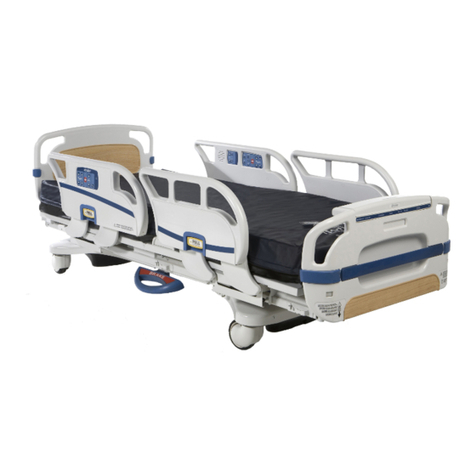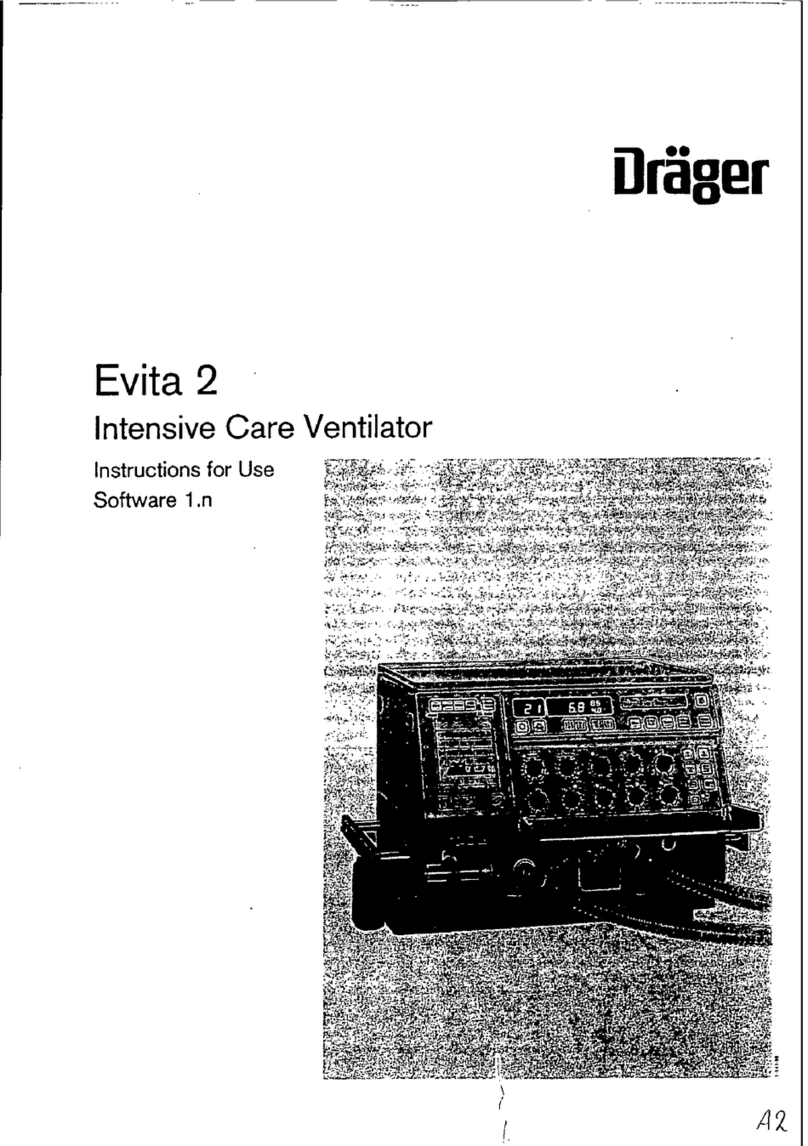Spacelabs Healthcare Pathfinder SL User manual

Pathnder SL v1.9
98000
Ambulatory ECG Analysis System
OPERATIONS MANUAL
070-2567-03 Rev. A | www.spacelabshealthcare.com

Consult Documents
YOU MUST READ THE ACCOMPANYING DOCUMENTS
(NOTE: Further instances of this symbol within this manual may be represented
in black and white)
WARNING
Acons or circumstances that may result in personal injury or death.
(NOTE: Further instances of this symbol within this manual may be represented
in black and white)

070-2567-03 Rev. A
iii
©2018 Spacelabs Healthcare Ltd
All rights reserved. Contents of this publicaon may not be reproduced in any form without the
wrien permission of Spacelabs Healthcare. Products of Spacelabs Healthcare are covered by
U.S. and foreign patents and/or pending patents. Specicaons and price change privileges are
reserved.
Spacelabs Healthcare considers itself responsible for the eects on safety, reliability and perfor-
mance of the equipment only if:
• Assembly operaons, re-adjustments, modicaons or repairs are carried out by per-
sons authorized by Spacelabs Healthcare, and
• The electrical installaon of the relevant room complies with the requirements of the
standard in force, and
• The equipment is used in accordance with the operaons manual.
Spacelabs Healthcare will make available, on request, such circuit diagrams, component part lists,
descripons, calibraon instrucons or other informaon which will assist appropriately quali-
ed technical personnel to repair those parts of the equipment which are classied by Spacelabs
Healthcare as eld repairable.
Spacelabs Healthcare is commied to providing comprehensive customer support beginning with
your inial inquiry through purchase, training, and service for the life of your Spacelabs Health-
care equipment.
CORPORATE OFFICES
Spacelabs Healthcare Inc
35301 SE Center St,
Snoqualmie, WA 98065.
USA
Tel: +1 425 396 3300
Fax: +1 425 396 3301
Spacelabs Healthcare Ltd
Unit B, Foxholes Centre,
John Tate Road, Herord.
SG13 7DT. UK
Tel: +44 (0) 1992 507700
Fax: +44 (0) 1992 501213
Brands and product names are trademarks of their respecve owners.
Cauon:
US Federal law restricts the devices documented herein to sale by, or on the
order of, a physician.
CE marked in accordance with the Medical Device Direcve, 93/42/EEC.
This manual was developed to provide key concepts about safety precauons.
Warnings: Alert the user to potenal serious outcomes (death, injury, or serious adverse
events) to the paent or user.
Cauons: or precauons alert the reader to exercise special care necessary for the safe
and eecve use of the device. They may include acons to be taken to avoid
eects on paents or users that may not be potenally life threatening or
result in serious injury, but about which the user should be aware. Cauons
may also alert the user to adverse eects on the device of use or misuse and
the care necessary to avoid such eects.
Note: A Note provides useful informaon about a funcon, or a procedure.

Pathnder SL v1.9 Operaons Manual
iv
This page is intenonally blank

070-2567-03 Rev. A
v
1. Introducon
1.1 Intended Use 1-1
1.2 Safety and Regulatory Informaon 1-1
1.2.1 General 1-2
1.2.2 Precauons for Use 1-2
1.2.3 FCC Compliance and Advisory Noce 1-2
1.3 Cleaning and Maintenance 1-3
1.4 Pathnder SL Compability 1-3
1.4.1 System Requirements 1-3
1.5 Manuals 1-4
1.6 Disclaimer 1-4
1.7 Installaon Informaon 1-4
1.8 Working with Pathnder SL 1-4
1.8.1 Sing Properly 1-5
1.8.2 Arranging the Equipment 1-5
1.9 UDI Idener 1-5
2. Pathnder SL - System
2.1 The Time Bar 2-2
2.2 Pathnder SL Screens 2-2
2.3 7-Day Holter Analysis 2-3
2.4 Tool Bar 2-4
2.4.1 ECG Scan Toolbar 2-4
2.4.2 Setups Cog-Wheel 2-4
3. System Set Up
3.1 Display 3-1
3.2 Secondary Display 3-2
3.3 Context Menus 3-3
3.4 Other controls and buons 3-3
3.5 Tool ps 3-3
3.6 Event Markers 3-3
TABLE OF CONTENTS

Pathnder SL v1.9 Operaons Manual
vi
3.7 Beat Labels 3-3
3.8 Saving Sengs 3-4
3.9 Analysis Opons Acvated: Dongle Reader 3-6
4. Arrhythmia Analysis
4.1 Arrhythmia Detecon Algorithm 4-1
4.2 Analysis Sengs 4-1
4.3 Saving Analysis Sengs 4-3
4.4 Event Order 4-3
4.5 Event Severity 4-3
4.6 Analysis Menu 4-5
4.7 Thresholds 4-6
4.8 Insert a Trigger / Beat 4-7
4.9 Enable / Disable Channels 4-7
5. Pathnder SL Workow
5.1 Triage the recording 5-1
5.2 Scan the Recording 5-3
5.3 Full Disclosure ECG Scan 5-3
5.4 Superimposion/AVSEP Scan 5-3
5.4.1 Arrythmiagraph Markers 5-4
5.5 Starng ECG Scan 5-4
5.5.1 New Form 5-5
5.5.2 An Event 5-5
5.5.3 Reclassifying Individual Beats 5-6
5.6 Create An Event 5-6
5.7 Create New Event Types / Event Labels 5-6
5.8 Prinng ECG 5-7
5.9 Periodic Strips 5-7
6. Mouse/Keyboard/Hot Keys
6.1 Mouse and Keyboard 6-1
6.1.1 Dragging ECG Events 6-2
6.2 Keyboard 6-2
6.3 Beat classicaon keyboard shortcuts 6-3
7. Morphology
8. 12-Lead Holter
8.1 View all 12 Leads 8-1
8.2 Scan on 12 Leads 8-1

070-2567-03 Rev. A
vii
8.2.1 Calipers/Measurements 8-2
8.3 Detailed 12-Lead Review 8-2
8.3.1 Display Menu 8-2
8.3.2 Display Markers 8-3
8.3.3 Making Measurements with Markers 8-3
8.3.4 Marker Flags 8-3
8.3.5 Moving marker ags with the mouse 8-3
8.3.6 Making measurements with Calipers 8-4
8.3.7 Markers, Caliper and keyboard shortcuts 8-4
9. Event Eding
9.1 Event Review Screens 9-2
9.2 Filtered Event List 9-2
9.3 Event Summary Table 9-3
9.4 Mul-Event Screen 9-3
9.5 Edit Paent Details / Diary Events 9-4
9.5.1 Paent Events 9-4
9.6 Atrial Fibrillaon (AF) 9-4
9.6.1 Manual Creaon of AF Events 9-5
9.6.2 Eding AF 9-5
9.6.3 Mark Enre Recording as AF 9-5
10. Report Creaon and Data Export
10.1 Report Comments 10-2
10.2 Preview/Store Report 10-2
10.2.1 Preview 10-2
10.2.2 Store 10-2
10.2.3 AutoStore 10-3
10.2.4 Report Sengs 10-3
10.2.5 Create a Default Report Format 10-4
10.3 Exporng Data 10-4
11. Pacing
11.1 Pacing Screen 11-1
11.2 Pacing Graphs 11-2
11.2.1 Paced Beat Annotaon 11-2
11.3 Pacing Histograms 11-2
11.3.1 RR Intervals 11-3
11.3.2 Pace-spike to Pace-spike Intervals 11-3
11.3.3 Trigger to Pace-spike Intervals 11-3

Pathnder SL v1.9 Operaons Manual
viii
11.4 Scaer Plots 11-3
11.5 Combined 11-4
11.6 Summary Table 11-4
11.7 Paced Event Table 11-4
11.7.1 Create a Paced Event 11-4
11.8 Pacing Report 11-4
12. Graphs
13. Trend Table
14. HRV Analysis
14.1 Display HRV 14-1
14.2 Denions 14-2
14.3 HRV Criteria 14-2
14.4 HRV Graphs 14-3
15. Advanced HRV
15.1 Advanced HRV Opon Overview 15-1
15.2 What is HRV Analysis? 15-1
15.3 Accessing HRV 15-2
15.4 Time Domain Analysis: 15-2
15.5 Frequency Analysis 15-2
15.6 Viewing On-screen Epoch Reports 15-3
15.7 HRV Screens 15-4
15.8 Summary Stascs Screen 15-4
15.9 Mul-Epoch Analysis of HRV Screen 15-5
15.9.1 To use the Mul-Epoch Analysis of HRV screen 15-5
15.9.2 Scaer Plot (NN) Screen 15-5
15.10 NN Interval Histogram Screen 15-7
15.10.1 To use the NN Interval Histogram screen: 15-7
15.11 RR Intervals Screen 15-8
15.12 Frequency 3D Screen 15-8
15.12.1 To use the Frequency 3D screen: 15-9
15.13 HRV Terms and calculaons 15-9
15.14 Heart Rate Calculaon 15-9
16. Sleep Apnea
16.1 Indicaons and Intended Use 16-1
16.2 Warning 16-1
16.3 Precauons 16-2

070-2567-03 Rev. A
ix
16.4 Review the ECG Quality and QRS Detecon. 16-2
16.5 Arfact Signicant Misdetecon in Sleep-Time Periods 16-2
16.6 Set the Sleep Periods 16-2
16.7 Analysis Results 16-3
16.7.1 Sleep Period Apnea Classicaon : 16-3
17. QT Analysis
17.1 What is QT Analysis? 17-1
17.2 Before you Begin 17-2
17.3 QT Analysis 17-2
17.3.1 QT Graphs 17-2
17.3.2 QT Markers 17-2
17.3.3 QT Trend Table 17-2
18. Advanced QT Analysis
18.1 QT Opon Overview 18-1
18.2 Retrospecve QT analysis 18-2
18.3 Prospecve QT Analysis 18-3
18.4 QT Histogram 18-5
18.5 QTc Histogram 18-5
18.6 Trends 18-6
18.7 Scaer Plot 18-7
18.8 QT Strips 18-7
18.9 Summary Report 18-8
18.10 Hourly Reports 18-8
18.11 Analysis Opons 18-9
18.12 QT Detecon Criteria 18-9
18.13 QT Rejecon Criteria 18-10
18.14 User Proles 18-10
18.15 Review Opons 18-11
18.16 Report Opons 18-12
18.17 To Print the QT Report 18-12
19. ST Analysis
19.1 The ST Screen 19-1
19.2 ST Acon Replay Display 19-2
19.3 ST Analysis Sengs 19-3
19.3.1 Measurement Point Osets 19-3
19.3.2 ST Event Thresholds 19-3
19.3.3 ST Beat Exclusions 19-3
19.3.4 ST Datum 19-3
19.3.5 Pre/Post Event Times 19-4

Pathnder SL v1.9 Operaons Manual
x
19.4 ST Graphs 19-4
19.5 ST Event Table 19-4
19.6 Not ST Buon 19-5
19.7 12-Lead ST 19-5
19.8 ST Reports 19-5
20. Signs and Symbols

070-2567-03 Rev. A
1-1
1. Introducon
1.1 Intended Use
The Spacelabs Pathnder SL Holter Analyzer is intended to be used to analyze recordings of
ambulatory electrocardiograms made on compable Holter recorders. It is capable of detecng
certain abnormal arrhythmias, and allows the operator to view and edit the ECG and the analysis
results, and construct a report for physician use.
The Spacelabs Pathnder SL Holter Analyzer is intended for use on adult paents only as a
screening device to determine the need for clinical diagnosis and evaluaon by polysomnography
based on the paent’s score. The EGG recording may be obtained at any locaon specied by
a physician including home, hospital or clinic. Subjects screened for sleep apnea should have
periods of sleep of at least 4 hours duraon during which the EGG is predominantly sinus rhythm
in nature.
1.2 Safety and Regulatory Informaon
This product is in conformity with the essenal requirements and provisions of Council
Direcve 93/42/EEC concerning medical devices.
US Federal law restricts the devices documented herein to sale by, or on the order of,
a physician.
Consult Documents
THIS SYMBOL MEANS YOU MUST READ THE ACCOMPANYING DOCUMENTS
This product must be sent to separate collecon facilies for recovery and recycling.

Pathnder SL v1.9 Operaons Manual
1-2
1.2.1 General
The soware has been designed to be installed on a hardware system that complies with the
internaonal safety standard EN 60950/IEC 950, which is designated as class 1 and staonary
equipment.
This equipment must be earthed (grounded).
This equipment is designed for internal use only.
The equipment should be installed near to a socket outlet that is readily accessible. Do not use
mulple portable sockets.
Do not aempt to remove any enclosures. There are no user serviceable parts inside.
Use only the connecng cables supplied.
Do not operate the equipment if any of the cables are damaged.
Switch o and unplug the equipment if it is not going to be used for a few days.
1.2.2 Precauons for Use
The equipment should only be used with the external enclosures ed.
Do not expose the equipment to sudden extremes in temperature, direct sunlight or other heat
sources.
Do not spill any liquids onto the equipment. If you do, turn the equipment o and contact the
Service Department.
Do not drop the equipment or subject it to excessive bumping or jarring.
Do not obstruct, cover or poke objects into the equipment.
1.2.3 FCC Compliance and Advisory Noce
This equipment generates, uses and can radiate radio frequency energy and, if not installed
and used in accordance with the instrucons, may cause harmful interference to radio
communicaons.
This equipment has been tested and found to comply with the limits for a Class B digital device,
pursuant to Part 15 of the FCC Rules. These limits are designed to provide reasonable protecon
against harmful interference in a residenal installaon. However, there is no guarantee that
immunity to interference to radio or television recepon, which can oen be determined by
turning the equipment o and on. If radio or television interference is suspected, the user is
encouraged to try and correct the interference by one of the following measures:
• Reorient or relocate the receiving antenna
• Increase the separaon between the equipment and the receiver
• Connect to an outlet on a circuit dierent from that to which the receiver is connected
• Consult the dealer or an experienced radio/television technician for help.

070-2567-03 Rev. A
1-3
1.3 Cleaning and Maintenance
Note:
There are no user serviceable parts inside the Analyzer. The operator must not aempt
to dismantle the Analyzer. Aempng to do so may result in damage to the Analyzer or
personal injury. Refer any problems to qualied service personnel.
Periodically check that the venlaon grilles in the PC tower are free of dust. Refer to the PC
manufacturer’s instrucons for cleaning and maintenance advice.
Clean the monitor screen using a so cloth moistened with nonabrasive screen cleaning solvent.
Polish the screen to remove smears. Do not use rough paper towels or uy cloths.
Peripheral System Units : Consult the manufacturer’s operang manuals for further informaon
on instrucons for use. Clean the laser printer by following the instrucons in the printer’s
operator guide.
System Test Procedure: System tesng should be entrusted to a trained service engineer. Please
contact your supplier if you require the system checkout procedure.
The supporng PC should be regularly serviced, maintained and backed up to support recovery
or restores.
1.4 Pathnder SL Compability
Compable with:
• Sennel Cardiology Informaon Management System V9.x, V10.0.x, V10.5.0
• Lifecard CF, Lifecard 12, Evo and Aria Holter Recorders
Operang Systems
The analyzer is compable with:
Windows 7 (32 bit & 64 bit)
Windows 8.1 (64 bit)
Windows 10 (64 bit)
The PC specicaon should meet or exceed the minimum recommended specicaon for the
operang system.
1.4.1 System Requirements
The following is the minimum recommended PC Specicaon.
Processor: Intel i3, or i7 (lower specicaons are only acceptable for tesng or
training purposes)
RAM: 8Gb
Opcal Drive: CD-RW or DVD-RW/RAM
USB Ports: 3 available
Minimum Disk Space: 500 Gbyte free disk. (Plus sucient for data storage of recordings).
Audio
Display Resoluon Recommended 1920 x 1080 (lower resoluons may cause image
cropping)

Pathnder SL v1.9 Operaons Manual
1-4
1.5 Manuals
Customers using Pathnder SL should also refer to specic product user manuals for detailed
operang instrucons and safety informaon. Customers should ensure that they are using the
latest revision of the manual.
1.6 Disclaimer
Every eort has been taken to ensure the accuracy of this manual but Spacelabs Healthcare
cannot accept liability for consequences caused by errors or omissions. You are advised to check
with Spacelabs Healthcare on any point on which you are unsure or need conrmaon.
Note:
All images within this manual are intended for illustraon purposes only and may dier
slightly from the actual product.
1.7 Installaon Informaon
The installaon CD should be safely stored for re-use
This equipment should only be installed by Spacelabs Healthcare or qualied service personnel.
If being installed on hardware not provided by Spacelabs Healthcare or complex networks users
should seek appropriate qualied advice before installing the soware.
This equipment must be earthed (grounded).
The equipment should be installed in an area that is well venlated, clean, dry and where
the ambient temperature is between 10˚C to 32.5˚C, relave humidity is 30% to 75% (non-
condensing) and an atmospheric pressure is 700-1060 hPa.
This equipment is designed for indoor use only.
The equipment should be installed near to a socket outlet that is readily accessible.
Ensure that any furniture is suitable to support the weight of the equipment.
Locate the equipment away from strong magnec elds and electrical interference.
The equipment should be installed on a hard level surface, allowing enough space for air to
circulate when in use.
The equipment should be located in such a way that it does not present a hazard or interfere
with other equipment.
Ensure that cords and cables are routed sensibly so that they cannot be snagged or tripped over.
They should not be tugged or twisted or used to li the equipment.
1.8 Working with Pathnder SL
Pathnder SL should only be operated by an appropriately skilled or trained person. The operator
should be trained in electrocardiography. A qualied medical praconer should make the
diagnosis.

070-2567-03 Rev. A
1-5
Working with the Holter system may require:
• Close visual working with the display
• Frequent eye movement
• Sing sll for long periods of me
• Typing or mouse use for long periods of me
• Unaccustomed posture
This secon is to help advise against the these possible causes of discomfort. Follow the
instrucons to help you work more comfortably.
1.8.1 Sing Properly
If possible, use an adjustable chair that gives
support to your lower back. It should adjusted
so that the operator can sit with a straight back,
upper legs horizontal and feet at on the oor.
The back rest should be adjusted to support the
hollow of the back.
The shoulder and upper arm should make a right
angle with the forearm and hands. If the chair
needs to be raised to achieve correct posture, a
foot stool should be used to ensure the feet are
supported.
1.8.2 Arranging the Equipment
Ensure that the operang environment is free from interrupons to prevent operator error during
analysis.
Glare and reecons from lights and windows should be minimised by adjusng the lt and
swivel of the display. Cleaning the display regularly will help minimize reecons. Adjusng the
brightness and contrast of the controls will also help.
Posion the keyboard in from the front of the desk. Use a light touch on the keys when typing and
where available use a keyboard arm rest to support forearms.
Posion the mouse where it can be easily reached, normally just to the side of the keyboard.
Ensure there is plenty space in the area surrounding the mouse so you can make unimpeded
movements. Use the mouse mat to prevent mouse slipping and where available a mouse mat
with a forearm support / rest.
1.9 UDI Idener
The Pathnder SL v1.9 UDI (Unique Device Idencaon) idener can be found by clicking on
‘Help’ from within the Pathnder SL soware followed by ‘About Pathnder SL’.

Pathnder SL v1.9 Operaons Manual
1-6
This page is intenonally blank

070-2567-03 Rev. A
2-1
2. Pathnder SL - System
Full Disclosure is the rst screen displayed, the icons and menu opons remain the same
throughout analysis.
The top of the screen can be split into several secons:
Title Bar: The bar across the very top of the screen shows the paent’s name and ID.
Main Menu: Click on these text tles to open operaonal menus. These are Analysis, Report,
View, Sengs, Paent Details, Setups, and Help.
Screen Selector Icons: Click on these to move within the dierent display screens and analysis

Pathnder SL v1.9 Operaons Manual
2-2
modules. The icons across the screen are grouped according to their funcon and ordered le
to right with arrows moving you forward. Users can follow this workow to move through the
recording using the opmum Pathnder SL workow.
2.1 The Time Bar
The blue me bar runs across the top of the screen.
This will display the full recording (up to 7-days). Depending on the recording duraon markers
will indicate hourly references.
The me bar displays blue to indicate how much of the ECG has been analysed, yellow to show
how much has been loaded. Grey is outside the analysis.
Click on any point on the me bar to move the yellow marker arrows and display the associated
ECG. Use the drop down menu to the le to move to a specic day. Enter in a me in the
selected format to move to a specic me in the selected day.
2.2 Pathnder SL Screens
There are many dierent screens provided by Pathnder SL, each with their own purposes.
Switching between screens is simple as the me being displayed is consistent on all screens that
support any idea of a “current me”
Screen Selector
Icon
Description
Full disclosure
This display is designed to show the maximum amount of ECG at one me in
up to 12 channels.
Event Trend
This display graphically illustrates the me order and frequency of
arrhythmia events
ECG Scan
This display contains a super-imposion scanning view of the ECG in Full
Disclosure or Super Imposion, with a simultaneous Arrythmiagraph to
provide local context.
Event Editing
This display is split into two secons: the top secon always shows ECG while
the boom secon shows one of a large number of opons, each useful
for idenfying dierent areas of interest you may wish to invesgate, for
example; a heart rate graph; an RR interval histogram; event tables etc.
Multievent
This display is useful to speed up eding when there are many events of the
same type occurring, as on this display, several events can be edited at once.
Morphology
This display shows the dierent QRS morphologies that the analyser
detected, you can reclassify; merge and/or split these morphologies.

070-2567-03 Rev. A
2-3
Screen Selector
Icon
Description
Graphs
The Heart rate, ventricular beats per minute and paced beats per minute
graphs.
Report Summary
An editable screen showing data that will be on the front page of the nal
report
Trend Table
An editable hourly tabular data of events during the recording
Pacing
Graphs and tabular data showing paced beat intervals
Apnea
Displays an Esmated Apnea/Hypopnea score with corresponding ECG
ST
ST data analysis and graphs
QT
Stascal QT data
HRV
Stascal Heart Rate Variability data and graphs
Advanced HRV
Time Domain data and spectral (frequency) HRV analysis
Advanced QT
Beat to Beat QT analysis and reporng
12-Lead
Displays 12-Lead ECG with a rhythm strip
2.3 7-Day Holter Analysis
A useful feature in Pathnder SL is the ability to download and display up to 7-day’s Lifecard CF
Holter ECG connuously, over 1 analysis. One seven day report is compiled showing all data for
the recording on the summary page. This provides a valuable over-view of the enre recording.
Use the Event Trend screen to view 7-day’s of events.

Pathnder SL v1.9 Operaons Manual
2-4
2.4 Tool Bar
Within the Full Disclosure screen and ECG scan screens the Tool Bar of icons is displayed. These
include:
Icon Function
Play ECG.
Stop ECG.
Speed of Flowing ECG.
Channel displayed.
Use the magnifying icons to zoom in and out of the ECG.
Use the up and down arrow icons to page through the ECG.
Select the Back or Forward buons (found on the Time Bar) to navigate
me cursor posions.
Print a page direct. This will not be included in the nal report but is
useful for immediate print out review.
Print scaling will be dependent on the display Zoom sengs and the
number of channels displayed.
This icon will turn on / o beat annotaon - including the beat trigger
arrow.
2.4.1 ECG Scan Toolbar
Icon Funcon
Play ECG
Stop ECG
Speed of Flowing ECG
Channel displayed
2.4.2 Setups Cog-Wheel
Icon Funcon
Provides access to sengs for that feature.
This manual suits for next models
1
Table of contents
Other Spacelabs Healthcare Medical Equipment manuals
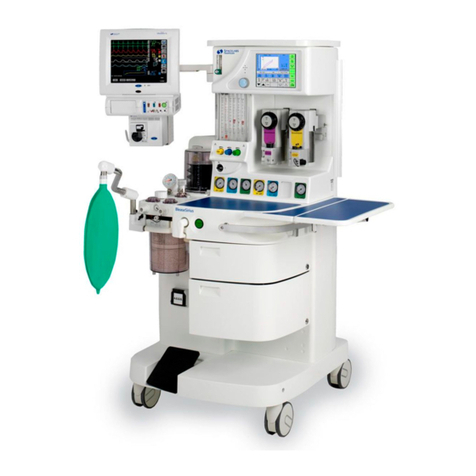
Spacelabs Healthcare
Spacelabs Healthcare BleaseSirius User manual
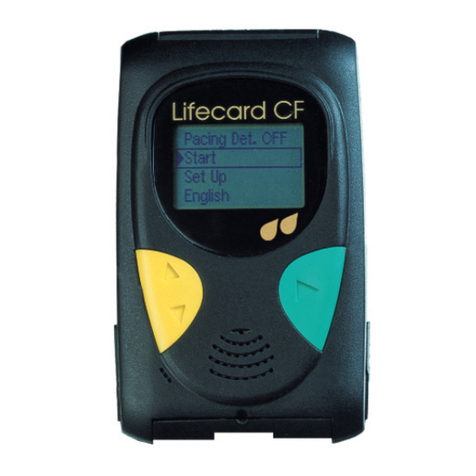
Spacelabs Healthcare
Spacelabs Healthcare Lifecard CF User manual
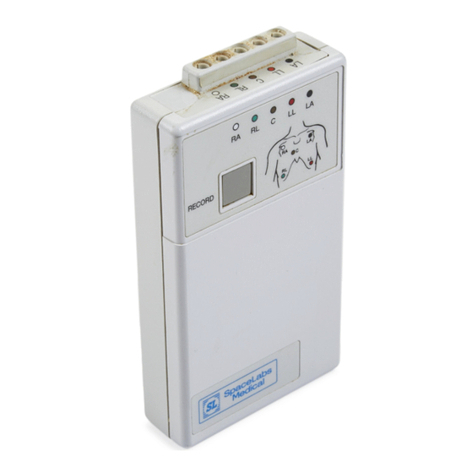
Spacelabs Healthcare
Spacelabs Healthcare Ultraview 90341 User manual

Spacelabs Healthcare
Spacelabs Healthcare Lifecard CF User manual
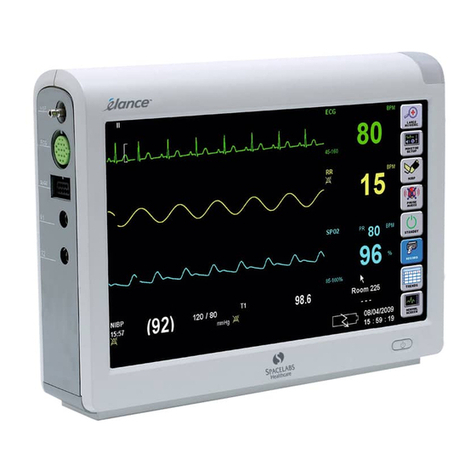
Spacelabs Healthcare
Spacelabs Healthcare elance Series User manual

